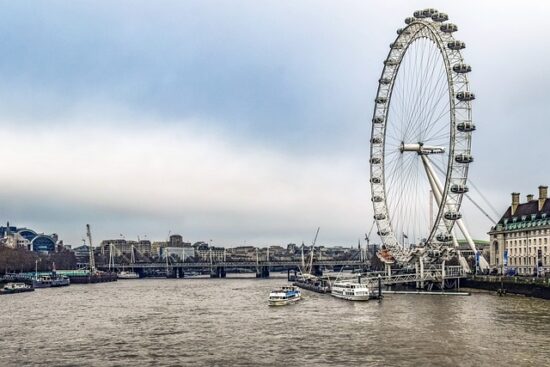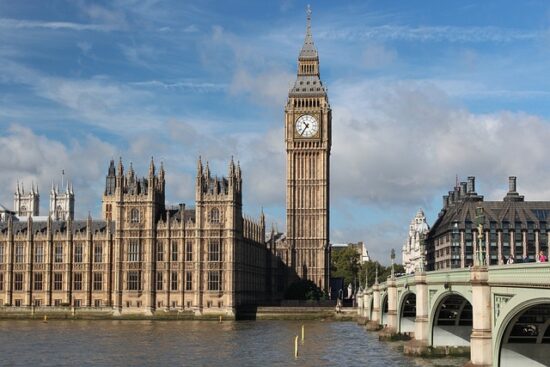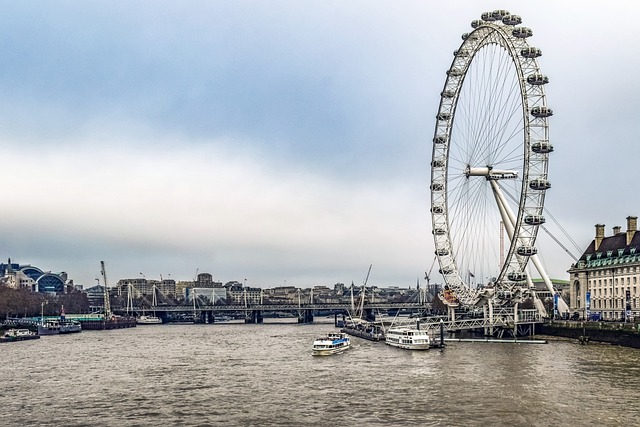River Thames is the longest river in England and the second longest river in the United Kingdom with a length of about 215 miles. It flows through southern England, starting from Gloucestershire Cotswolds to North Sea. It passes through eight English counties and flow alongside some of the major towns and cities such as Oxford, Richmond, Kingston upon Thames, Henley-on-Thames, Reading, Windsor and finally through the center of London before falling into the North Sea. River Thames is a very important river in England, it is favourite spot for peaceful weekend evening, fishing, boating, trail hikers and water sports. We have gathered complete set of River Thames Facts to help you learn all about it.
River Thames Facts
How long is the river Thames?
- The length of River Thames from its source (Gloucestershire Cotswolds) to North Sea is 215 miles (346 km)
- The non-tidal part of Thames is 147 miles while the tidal part of Thames is 55 miles.

Facts and Figures
- There are total 45 locks at River Thames. Locks help in boat navigation where the level of the water is not the same.
- The floodplain area of the river is about 896 km square.
- There are 29 bridges over the tidal Thames and 75 bridges over the non-tidal Thames.
- It flows through 16 main cities and key towns.
- About 20 tunnels exists that cross the River Thames including the the world’s first ever underwater tunnel built in 1843.
- The non-tidal part of Thames is from the source to Teddington. It is about 147 miles (237 km). The river falls for about 342 feet when it travels from the source to Teddington.
- The part of the river from Teddington to the North Sea is called the tidal part of Thames which is 55 miles in length.
- About 60 active shipping terminals exists on the tidal part of the Thames.
- Every year about 300,000 tonnes of sediment is carried by the River Thames from its source to the sea.
- About 8 meters change occurs in the water level of the river.
- The tidal part of Thames receives high tides up to 24 feet.
- The world’s second largest floating barrier, Thames Barrier, is situated at river Thames. It was constructed in 1974 at Woolwich to control floods and storm surges.
How wide is the river Thames?
The river widens as it flows downstream from its source to the sea.
- At Lechlade it is 18 meters
- 76 meters at Oxford
- 100 meters at Teddington,
- 265 meters at London Bridge
- 448 meters at Woolwich
- 732 meters at Gravesend
- about 10 kilometers at Nore Light.
- At the Estuary(where the river falls into the sea) the river width stretches to 29 kilometers.

Flow of River Thames:
The water flow speeds up down the stream (towards the sea) of the river Thames. It is due to the addition of more water from the different tributaries that join the river on its way.
- The flow speed at Buscot is about 176 million gallons/day.
- 790 million gallons/day at Reading
- About 1,253 million gallons/day at Kingston.
The Name Thames
- The name Thames has been derived from the word Temese which is a Celtic word for river.
- The river is known as River Isis at Oxford.
Where does the river Thames start – Source of River Thames
- There are two sources: Thames Head and Seven Springs
- The first source of the river is called is called the Thames Head which is situated at southern Gloucestershire, in the Cotswolds near a town called Cirencester.
- The second source is Seven Springs, where river Chum falls into Thames. It is situated near Cheltenham.
- The water flow is seasonal at the springs of Thames Head while at Seven Springs it flows all year around.
- River Thames get water from 18 major river catchments.

Islands in River Thames
- From Kent to Oxfordshire there are total of more than 190 islands in the River Thames.
- 45 of these islands have people living in them in small settlements.
- These islands are called Aits or Eyots.
Wildlife at River Thames
- The tidal Thames has more than 100 species of fish while the non-tidal Thames hosts more than 25 species of coarse fish. Among the Freshwater fish the most prominent are flounder, barbel, bleak, pike, perch, roach, chub, dace and brown trout.
- The estuary of the Thames is home to aquatic mammals such as the gray and harbour seals where they breed and nurse their young ones.
- About 350 species of invertebrates that live at the bottom of the river exists at the river Thames.
-
During summer and autumn Bottlenose Dolphins and Harbour porpoises also visits the estuary of the Thames.
- Otter and water vole are also found in the river.
- Thames is home to various bird species which include herring gull, cormorant,black-headed gull, great crested grebe, , moorhen, kingfisher, coot, heron, Mallard duck, Mandarin duck, Wood duck, Egyptian geese, bar-headed geese, Canadian geese mute swan and black swan. The mute swan are very common and black swan is rarely seen now.
- A ceremony of Swan Upping is held every year in which the swans at river Thames are counted and tagged.
-
About 46 different areas has been internationally designated as Special Protection Areas and Areas of Conservation at the Thames River Basin.
Main Attractions
- It has a national trail called Thames Path which is about 184 miles (296 km) and follows the river from its source. It is the longest riverside walk in the whole Europe.
- The river is favourite place for sporting and leisure activities such as fishing, rowing, canoeing and boat trips.
- The areas of the North Wessex Downs, The Kent Downs and The Cotswolds where the river crosses are well known for their amazing natural beauty.
River Thames in Literature
-
- The river Thames is such an important part of the life of the people of England that it has been featured in the their literature.
-
- River Thames has always been a dank, stinking sludge and crime scene in the novels of Charles Dickens.
- Three Men in a Boat, Alice in Wonderland and The Wind in the Willows all featured river Thames in them.
Learn more: England Facts For Kids


Leave a Reply